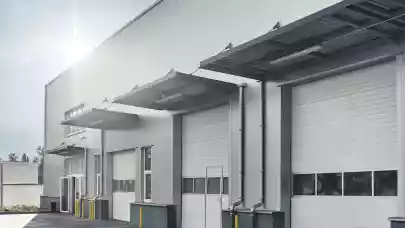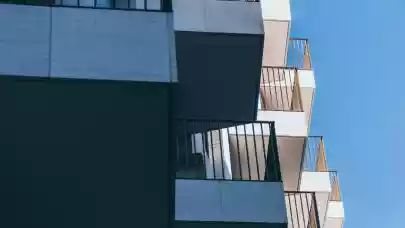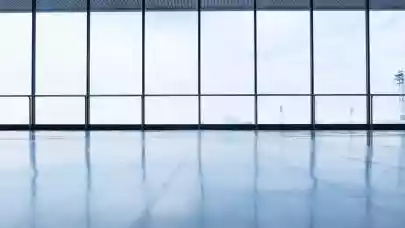
Any investor who observes the real estate market right now is likely to start with warehouse assets. This trend has already been visible, but the consequences of the COVID-19 pandemic have accelerated it to an astonishing degree, says Robert Dobrzycki, Chief Executive Officer of Panattoni who talked to Property Forum about the driving forces behind the growth of the warehouse market.
The warehouse market, along with residential, seems to be pandemic-proof. Is a rapid e-commerce growth the only reason for this?
E-commerce has already been a main driver for warehouse market growth for a few years now, but the pandemic impact has given it an additional boost. Logistics real estate assets not only have proven to be resilient, but these assets have experienced a boom as consumption shifted to online channels. The lockdown, of course, is a very unusual time when the online purchases traffic has sharply intensified, but I am quite sure that this trend will continue growing. According to the estimates, in 2023 the value of the e-commerce market in Poland will increase up to PLN 58 billion (as compared to ca. PLN 44 billion in 2020).
However, e-commerce growth is not the only reason for the increased demand for warehouse assets. It has also been fostered by other new trends. We see here a trend in re-locating production closer to the end consumer, as a way to shorten supply chains, greater use of post-industrial areas for investments and new trends in demand for modern production plants, e.g. rapid development of e-mobility production facilities. All together these shifts more than offset a softening of sentiment among traditional retailers and the automotive sector.

Robert Dobrzycki
CEO
Panattoni
Prime location warehouse projects were extremely popular among investors last year. Can we expect their divorce from retail and office markets and subsequently a lasting, loving marriage with warehouse & logistics assets?
Any investor who observes the real estate market right now is likely to start with our asset class. This trend has already been visible, but the consequences of the COVID-19 pandemic have accelerated it to an astonishing degree. Early on, it became pretty clear that industrial and logistics assets would be the winners in terms of tenant demand, so this is where the investors would allocate their capital going forward. A wide array of investors have already been active in our market. But now we see a new wave of investors, some of them very experienced in other sectors, that previously had not allocated much capital to logistics or invested only a fraction of their assets.
It is true, that only a few investors had been active in the retail sector lately and it would be hard for that sector to regain its full popularity. The office sector, however, has a chance to shake out a bit, but it is quite clear what will happen in the industrial segment. In the past, much more capital had been invested in the other market sectors as compared to the logistics segment, thus even a small reallocation creates a lot of additional investor demand.
So, is there no threat that warehouse developers will drop „big box” speculative investments for BTS projects, like we saw 10 years ago during a previous market downturn?
First of all, let me highlight that there is no downturn in the logistics and warehouse market. Despite a short-lived disruption to investments and a delay in decision-making at the beginning of the pandemic, the market has continued to grow rapidly. There is a stable increase in demand for new space, and currently this is the main driver for speculative development. Those assets can be taken up immediately or within a few months’ time if they are under construction. Due to this very encouraging trend, Panattoni continues to develop speculative assets in an equal proportion to BTS projects.
Which industry segment, besides e-commerce, will be the next to increase demand for warehouses?
I am quite convinced that this is the technological sector, especially when it comes to green technology solutions: the e-mobility industry, such as batteries and parts for electric cars or data centres. We see that from the data on fundamental demand-supply dynamics and their future growth potential.
And which industry branches will be the most affected and might vacate their current space?
As we now see an upsurge in the production of batteries and components for the alternative fuel automotive sector – both hybrid and electric car production – the traditional automotive sector has been vulnerable to a crisis and has been performing rather poorly during the pandemic. Not only has this been due to a decline in sales, but also due to reduced production of the vehicles and parts, as a result of production interruptions or closures of production plants.
Analysts forecast that many businesses will move at least part of their production activities back to Europe to avoid the risk of a repeated sudden break of supply chains with China. Do you see any signs of nearshoring among your customers?
Many manufacturing and distribution companies that are dependent on imports in their production cycle have suffered from disruptions in the supply of goods or semi-finished products. Such businesses are now diversifying their supply chains in a move to stay closer to consumers, i.e. closer to Europe, and they plan to open new production lines – not in Asia as in the past, but closer to their sales markets, as a measure to shorten the supply chain. The production cost has ceased to be the only important factor, and production cycle security has become a key factor. Just recently we have finished the construction of a modern plant in Rzeszów for electromobility firm Phoenix Contact E-Mobility. This facility will serve for testing and manufacturing of various charging cables for world leaders in electric car production.
The pandemic will not last forever, but this new mindset in production cycle safety will persist because the consequences of COVID-19 have provided a reminder for businesses about the risks stemming from long, cross-border supply chains. A business need to establish warehousing space and provide security of supply chains in every European country has fuelled an immediate demand for warehousing facilities. Our customers will continue to keep that space in the long run to reduce any future risks.
Highly demanded by e-commerce, „last mile” urban warehouses need to be constructed as close to the city centres as possible and they are very often developed on brownfields. Taking into account the costs of plot revitalization and high prices of land within city boundaries, are such expenses justified?
Definitely yes, especially since the delivery time to a customer becomes an even more important factor than the delivery cost. Locations within city boundaries are now the most sought after. Alone in the first three quarters of 2020, brownfield investments accounted for one-third of our space commissioned for use. This proves the attractiveness of post-industrial areas. Of course, such investment plots pose many more technical challenges but they also have a number of advantages. First of all, they tend to be very attractively located – well connected with the expressway network and, above all, close to the end-customers. Urban warehouses are also more accessible and thus attractive to potential workers. Thirdly, brownfield investments usually require only a reconstruction of the existing infrastructure, without the need for e.g. a long and expensive water supply connections or construction of access roads. Fourthly, brownfield investments are a form of rational land management and they are in line with the circular economy concepts and sustainable development principles. And those goals have become increasingly important and valued factors for our clients.
Panattoni is present in 7 European countries. Which of them do you consider the most promising, in terms of warehousing investment attractiveness, in the new, post-COVID times?
We started our business in Poland 16 years ago. During that time we have expanded to other countries in Europe, but Poland still remains the most promising and attractive market. It is fundamentally a very strong market that offers attractive products for investment funds – and that is what keeps the capital markets so extremely active here. It results from a number of factors: firstly, the highly dynamic e-commerce sector has been already generating a great deal of interest – and now, due to the COVID-19 pandemic, it generates even more than ever before. Poland’s geographical position also poses an advantage when it comes to logistics services for consumers in Germany and other Western European countries. Moreover, we have seen production businesses increasing their share in the demand for industrial space. These are the first symptoms of a trend or desire to become independent of manufacturing companies from Asia or maybe even to relocate production sites much closer to consumption areas. And Poland is a favourable location – the costs are still lower as compared to the more mature European markets and the availability of human resources is better. Therefore, Poland remains a stable and safe location and Poland offers higher returns on investments than Western Europe, Asia or America. All this resulted in a natural movement of investment capital to Poland.



